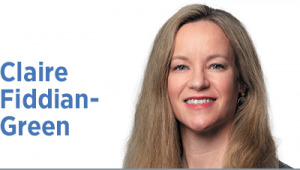Subscriber Benefit
As a subscriber you can listen to articles at work, in the car, or while you work out. Subscribe Now In October 2022, my Forefront column encouraged Indy leaders to work together to spur investment in the city and build a brand to market Indianapolis to young people. The column was inspired by a trip to Nashville for the Indy Chamber’s annual Leadership Exchange (LEX), where we learned about the partnerships and intentional branding efforts that led to “Music City’s” economic development wins and population growth.
In October 2022, my Forefront column encouraged Indy leaders to work together to spur investment in the city and build a brand to market Indianapolis to young people. The column was inspired by a trip to Nashville for the Indy Chamber’s annual Leadership Exchange (LEX), where we learned about the partnerships and intentional branding efforts that led to “Music City’s” economic development wins and population growth.
Two years later, I find myself revisiting the topic, this time after the 2024 LEX trip to Boston. You might be thinking, “Boston is Boston—it’s nothing like Indianapolis!” We are more similar than you might think—at least we used to be.
In 1978, Boston and Indianapolis were economic peers, with equivalent per capita income. Now, Boston’s per capita income is 37% higher than ours.
How did Boston get from there to here? By taking advantage of one of its greatest assets: the densest concentration of colleges and universities in the nation. With the help of a $1.5 billion investment from Massachusetts state government, leaders built a life sciences hub centered around the talent and intellectual property coming out of their colleges. This approach keeps graduates in the city and brings new companies—and their highly educated employees—to Boston. A critical precursor was the “Big Dig” project that moved the major downtown highway underground, reconnecting divided neighborhoods and enabling new investments in outdoor spaces, and retail and commercial buildings.
While we do not have the same concentration of higher education institutions as Boston, many excellent colleges and universities call Indianapolis home. Additionally, the expansion of both Indiana University Indianapolis and Purdue University at Indianapolis will bring thousands of students and researchers downtown. What can we do to build on this momentum to keep graduates in our city?
First, as I said before, we should increase investments in the infrastructure young people are seeking—things like public transit, bike lanes and green spaces are important. So, too, are the revitalization efforts we’re seeing around areas like the Bottleworks District and Circle Centre Mall.
We must also ensure we have an appropriate housing supply at a variety of price points, which was a concern shared by our Boston speakers during the recent LEX trip.
Additionally, we must create a robust connection between employers and students through comprehensive career advising services, starting in middle school and continuing through high school and into college. Students, their families and educators need to have a clear idea of available career opportunities in Indiana and how students can best prepare for those careers.
Finally, we need a coordinated effort to market the Indianapolis area that motivates young people to stay in Indianapolis after they graduate and attracts others from across our nation to visit or relocate.
Luckily, the Indy Chamber is already at work on a regional branding initiative that seeks to capitalize on what our city already has to offer. This marketing and branding work won’t take hold overnight, so we must be patient and resist the urge to overhaul our approach every few years.
In short, we must build the type of city where young people want to live, and we must make sure they know about it. This takes visionary leaders who are willing to collaborate to move big projects forward. Easier said than done, but I know one thing for sure: Indianapolis’ biggest asset is our people, and we’re No. 1 when it comes to working together toward a common goal.•
__________
Fiddian-Green is president and CEO of the Richard M. Fairbanks Foundation, whose mission is to advance the vitality of Indianapolis and the well-being of its people. Send comments to ibjedit@ibj.com.
Click here for more Forefront columns.
Please enable JavaScript to view this content.
